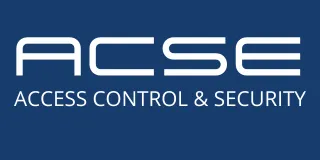
How to Choose the Best Automated Gate for Your Home or Business
Automated gates provide security, convenience, and aesthetic value for both residential and commercial properties. Whether you are a homeowner looking for better privacy or a business owner seeking enhanced perimeter control, choosing the right automated gate system is a critical investment that requires thoughtful consideration.
With a wide variety of gate types, automation technologies, and security features available, selecting the best system can be overwhelming. This article breaks down the key factors to help homeowners, business owners, and installers make an informed decision on the most suitable automated gate for their needs.
Understanding the Benefits of Automated Gates
Before diving into the selection process, it’s important to recognize why automated gates are an excellent investment for both homes and businesses.
Enhanced Security – Automated gates act as a first line of defense against unauthorized access, preventing trespassers and increasing security.
Increased Property Value – Installing an automated gate can significantly boost property value, making it more attractive to buyers and tenants.
Convenience and Efficiency – No need to exit a vehicle to open or close the gate, offering seamless entry and exit with remote access controls.
Aesthetic Appeal – A well-designed gate enhances the visual appeal of a property, adding elegance and modernity.
Access Control and Monitoring – Advanced systems allow property owners to track and restrict access, ensuring that only authorized individuals can enter.
Step 1: Selecting the Right Type of Gate for Your Property
The first decision is choosing the gate type, which depends on factors like available space, security requirements, and aesthetic preferences.
Swing Gates
Swing gates are a classic choice and can be single-leaf or double-leaf, depending on the width of the entrance.
✅ Best for properties with ample driveway space.
✅ Offers a traditional and elegant appearance.
⚠ Requires clearance space for the gate to swing open.
⚠ May not be ideal for sloped driveways due to opening limitations.
Sliding Gates
Sliding gates operate on a track and slide horizontally, making them perfect for properties with limited space.
✅ Ideal for narrow driveways or high-traffic areas.
✅ More resistant to strong winds compared to swing gates.
⚠ Requires a longer fence line to accommodate the sliding motion.
⚠ Regular maintenance is needed to keep the track system clear of debris.
Vertical Lift or Cantilever Gates
These gates operate by lifting vertically or sliding on a counterbalanced system, eliminating the need for ground tracks.
✅ Excellent for commercial and industrial settings.
✅ Performs well in uneven terrains or snow-prone areas.
⚠ Typically more expensive than swing or sliding gates.
⚠ Requires adequate overhead clearance.
Step 2: Choosing the Right Automation System
Once the gate type is selected, the next decision is how it will be automated. There are two main types of gate operators:
Hydraulic Gate Operators
✅ Best suited for heavy-duty applications.
✅ Offers smooth and quiet operation.
✅ More durable and resistant to wear and tear.
⚠ Higher initial cost and maintenance requirements.
Electromechanical Gate Operators
✅ Ideal for residential and light commercial applications.
✅ Cost-effective and easier to install.
✅ Available in both articulated and linear models.
⚠ May require frequent servicing for high-traffic use.
The choice between hydraulic and electromechanical systems depends on traffic frequency, budget, and expected durability.
Step 3: Integrating Smart Access Control Features
Modern automated gates offer a variety of access control options that enhance security and convenience.
Key Access Control Options
Remote Control or Keypad Entry – Standard option for residential driveways.
RFID or Proximity Card Readers – Common in commercial and gated community settings.
Biometric Access (Fingerprint or Facial Recognition) – Best for high-security areas.
Smartphone App or Wi-Fi Connectivity – Enables remote access and monitoring from anywhere.
Each access method varies in terms of security, user convenience, and installation complexity.
Step 4: Considering Power Supply and Backup Systems
Automated gates require a reliable power source to function properly. The best setup depends on energy availability and backup needs.
Primary Power Supply Options
Hardwired Electrical Connection – Most reliable for consistent power supply.
Solar-Powered Systems – Energy-efficient and ideal for remote locations.
Backup Power Solutions
Battery Backup Systems – Ensures operation during power outages.
Manual Release Mechanisms – Allows for manual gate operation in case of system failure.
Choosing the right power solution ensures uninterrupted access and prevents being locked out in emergencies.
Step 5: Factoring in Safety and Compliance Regulations
For commercial and residential properties, safety compliance is crucial to avoid liability and ensure reliable operation.
🔹 UL 325 Compliance – Requires safety features like photoelectric sensors, edge sensors, and auto-reverse functions.
🔹 ASTM F2200 Standards – Provides guidelines on gate structure and installation safety.
🔹 Local Zoning Regulations – Some areas have specific height or setback requirements for gates.
Working with a certified installer ensures that your gate meets safety and regulatory requirements.
Step 6: Budget Considerations and Long-Term Maintenance
Automated gates require initial investment and ongoing maintenance. Property owners should consider:
Installation Costs – Price varies depending on gate type, operator system, and security features.
Maintenance Requirements – Hydraulic systems need more servicing than electromechanical models.
Warranty and Support – Ensure the system comes with a reliable manufacturer warranty.
Regular maintenance, such as lubricating moving parts, checking sensors, and cleaning debris from tracks, will extend the gate’s lifespan.
Final Thoughts: Choosing the Best Automated Gate for Your Needs
Selecting the right automated gate involves evaluating multiple factors, including security, accessibility, space, and budget.
Homeowners should focus on aesthetics, ease of use, and safety.
Business owners should prioritize security, traffic flow, and access control options.
Installers should ensure compliance with industry standards and recommend durable, future-proof solutions.
By carefully considering these factors, property owners and installers can ensure a successful gate automation project that provides long-term reliability, safety, and convenience.

